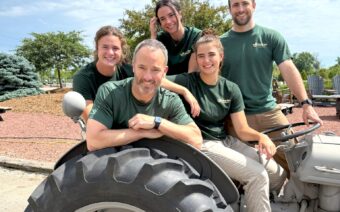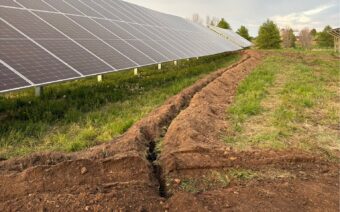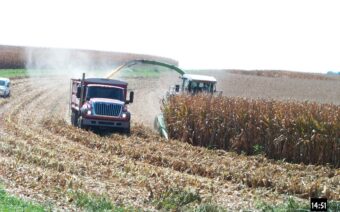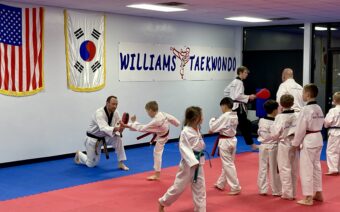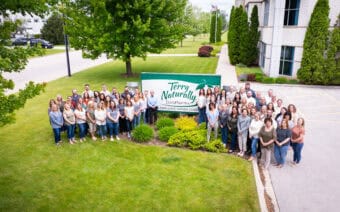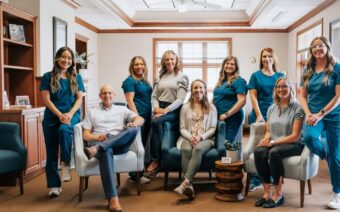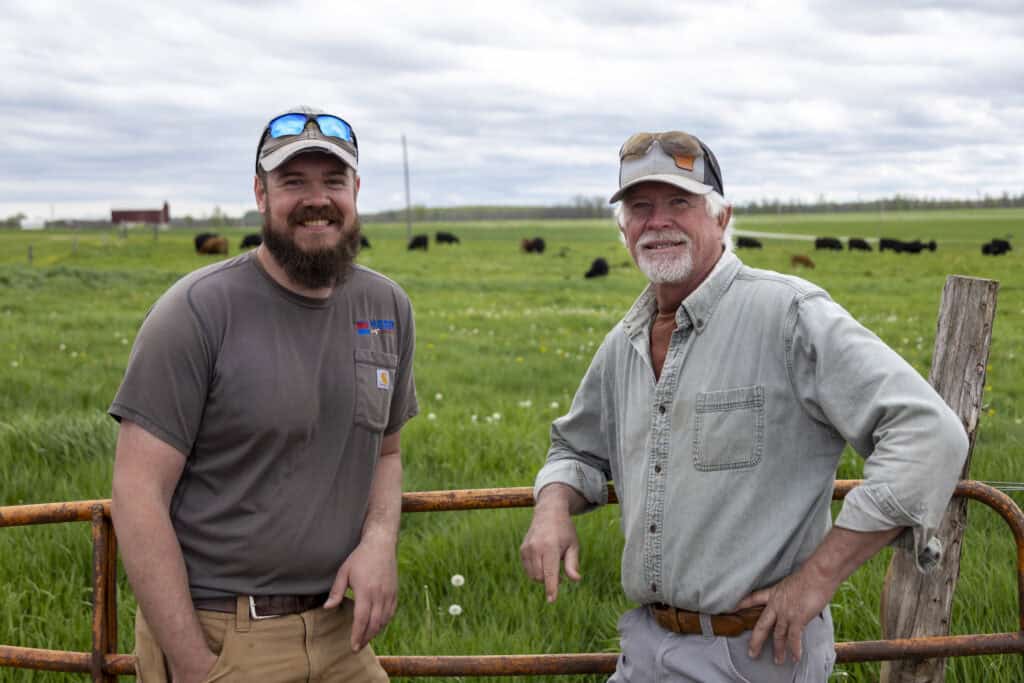
June 2, 2025
CHILTON – For Riveredge Farms – a fourth-generation beef cattle and crop farm located east of Chilton – Co-owner Jared Geiser said the mission is simple: Continue the farming legacy of raising high-quality cattle and crops for generations to come.
The mantra of “It’s not our land, but it’s our turn,” Jared – who operates the farm with his dad, Luke, and his uncle, Leon – said, guides everything they do.
Established in 1921, Jared said the Chilton farm raises winter wheat, soybeans, hay and a herd of 55-60 registered Simmental and SimAngus cows.
Retaining ownership of its steers, Jared said they finish and direct-market their beef in the local community.
A peek into the past
Now in its third and fourth generation, Jared said Riveredge Farms was established by Martin and Magdalena Geiser.
Along with their 12 children, according to riveredgefarms.com, Martin and Magdalena grew their home into a dairy and diversified crop farm – raising dairy cows, hogs, chickens, barley, oats, rapeseed, alfalfa and a large garden.
The second generation – brothers, Norbert and Alfred – continued to expand the farm, milking 52 cows on a pipeline by the early 1950s.
It was under the leadership of Norbert and Alfred, per the website, that Riveredge Farms transitioned from horse-drawn power to tractors and a self-propelled combine on the farm.
Alfred’s sons, Luke and Leon, continued their dad’s dairy operation and added beef cattle to the mix in the mid-1990s.
However, in December 1997, the decision was made to sell the dairy herd and transition fully to beef cattle and crops – which Jared said continues to be the farm’s focus today.
“It was really a break point in the industry,” he said. “If we were staying in dairy, we needed to get larger, which meant more investment, debt, getting to the point of hiring employees and tackling larger issues.”
Today, Jared said the farm serves two purposes – beef cattle production and about 300 acres of row crops, corn, soybeans, wheat and hay crops for its cattle.
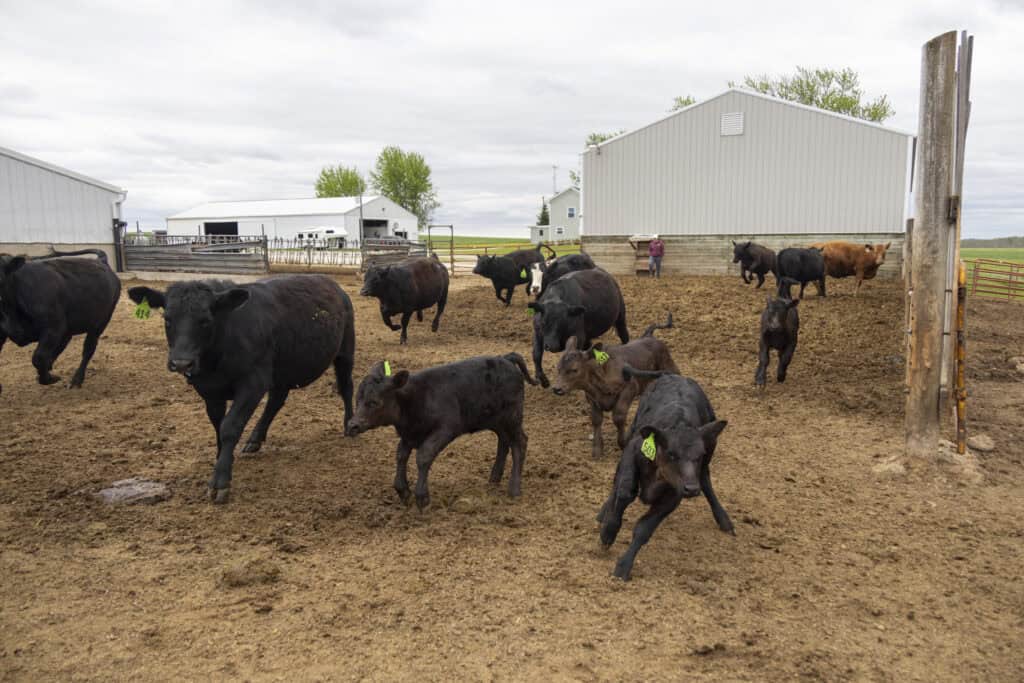
Focusing solely on beef cattle, Jared said, gave Luke and Leon some time back they were spending on milking cows – noting that beef cattle do most of the work themselves once they go out into the pasture.
“They do what cows naturally do, but financially and economically, it’s quite a bit of difference,” he said. “These cows are raising one calf a year, and that’s that one paycheck versus a milk cow paying throughout the year.”
Jared said with beef cattle, the focus is solely on “the better you do for them, the better they do for you.”
“So, it’s a perfect system of giving them better feed, giving them everything they need,” he said. “Do that and they’re going to grow faster, better. They’re going to marble more, and the end product will be more desirable if you take care early on. It’s a unique system that fits together so well.”
The cattle
Riveredge Farms cattle, Jared said, raise Simmental (a dual-purpose Swiss cattle breed) and SimAngus (crossbreeds of Simmental & Angus cattle) cows – both of which were originally developed as triple-purpose breeds for milk, meat and draft.
“While they still produce milk, and they still all do the same things dairy cows do, they’re not trying to produce the excess that we’re going to take off and put in our tanks to make cheese, yogurt and other dairy products,” he said. “Her goal is just to feed that calf.”
As an animal manager, Jared said his goal is to make sure the cows have everything they need to live, grow calves and thrive.
Riveredge Farms’ pasture, he said, is filled with calves – both male and female – who are currently at most 45-60 days old, and then all the mature females.
This time of year, Jared said, is about the midpoint in the spring season, and is when the herd is released into the pasture for the first time in the year.
The mature cows, he said, will be just about done calving for the season.
Mid-to-late June, Jared said, is when they start preparing to breed the herd for next year’s calves, with bulls being released into the pasture during the Fourth of July weekend.
“We do use artificial insemination, a little bit of embryo transfer, (but) ultimately, we let the bulls do their thing – they’re better at it than we are,” he said. “And they’re pretty proud to do their job, too.”
The beef cattle business
The beef cattle business, Jared said, has grown over the years, becoming more systematic.
The process, he said, starts with the calves being born.
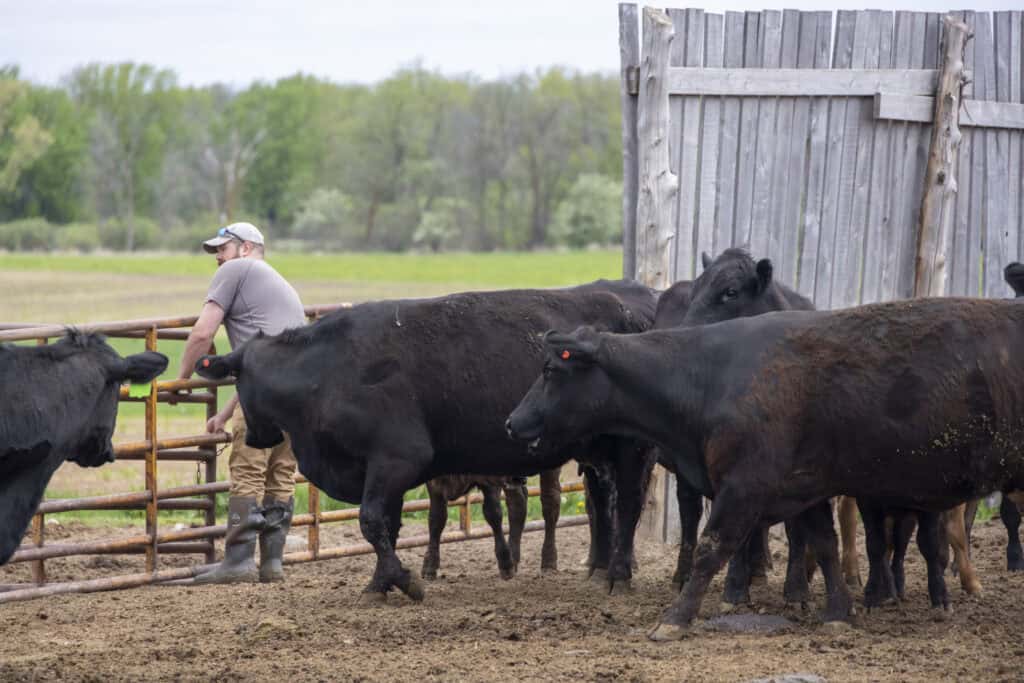
After about six or seven months in the pasture, Jared said calves are weaned off their mothers.
This, he said, serves two purposes – it’s the next step in the calves’ development and gives them a chance to put on some body weight for winter.
Moving into the following spring, Jared said the calves from the previous year go in one of two directions:
- They become part of the herd and are bred
- They end up in the beef production line that is sold locally as halves and quarters
For production, Jared said their cattle are sent to one of three local processors.
“We have a great group of customers that have been with us since the 1990s,” he said. “Over the years, I’ve been able to develop great relationships with those people, to the point where people don’t even ask the price.”
Jared said they sell about 30 head of animals a year – which, if you break that into quarters, he said that’s almost 120 families a year that get fed directly from Riveredge.
That, he said, is what makes him excited to do what he does – being able to be a part of that customer-facing piece to show the community what Riveredge does.
‘Destined’ to be a farmer
Jared said his passion for farming started from an early age, with a traditional rural upbringing of farm chores on nights and weekends, as well as 4-H and FFA.
He said he naturally found a love for agriculture as a result of this.
“My first word was ‘cow’ – I didn’t have a choice in the matter,” he said. “This is what I was destined to do.”
Jared graduated from the University of Wisconsin-River Falls in 2019 with a degree in animal science and agribusiness and worked throughout Nebraska, Kansas and Wisconsin before returning home in 2023.
Since coming back to Riveredge, Jared said he’s taken on the role of feed merchandiser – focusing on the “culture” aspect of agriculture, noting it’s a people-centric, community-based business.
From an industry standpoint, Jared said only about 3% of the U.S. population is directly involved with agriculture, and 97% of that number is family owned.
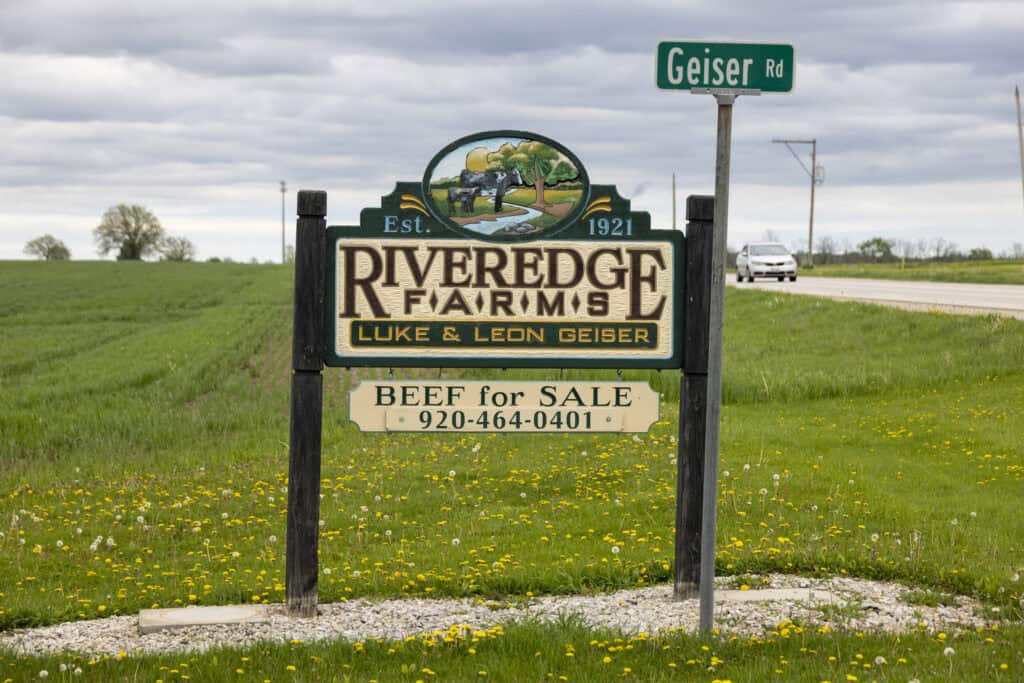
Sharing his knowledge and love of agriculture with others, Jared said, is one of the aspects of his job that he enjoys the most.
“I think that’s the fun part of being a young person in agriculture – I get to bridge that gap and show people this isn’t just a job I do because I have to, but this is what I’ve chosen to do with my life,” he said. “I am able to feed not only my family but also my community. I get to be involved in rural development in a way, and that’s fun.”
Jared said he embraces that agriculture at its core is optimistic.
“You plant a seed in the ground hoping that it rains,’ he said. “You breed this year’s cows in the hopes they calve next year. It’s about looking forward and preparing for the next step.”
Sustainability – not a new concept
Though today, “sustainability” is a big buzzword, Luke said instead of following what’s popular now, he suggests folks look across Riveredge Farms’ 100-plus-year-old legacy and what others are doing and learn from it.
Farms that have survived the longest, he said, are innately sustainable and use practices to encourage that kind of behavior.
Typically, Luke said sustainability has two areas of focus – economic and environmental – regarding natural resources and land management.
Jared said he believes you have to look at both arms equally because they’re all connected.
“As a fourth-generation farmer, I’m walking from the back door to the barn door in the same route my grandfather and great-grandfather had,” he said. “Our mantra – ‘It’s not my farm, it’s just my turn’ – I think follows me around as I look at what sustainability means.”
When you consider sustainability from a natural resource standpoint, Jared said they’ve been ahead of that curve for a long time – taking soil samples, creating a nutrient management plan, understanding crop rotations and utilizing no-till, crop rotations and cover crops to preserve soil health.
“It’s not because we’re (trying) to get a sustainability award,” he said. “It’s because it’s what works for us.”
 New owners at the helm of Tribute Brewing Company
New owners at the helm of Tribute Brewing Company A rebrand for the chamber made to be ‘greater for you’
A rebrand for the chamber made to be ‘greater for you’



